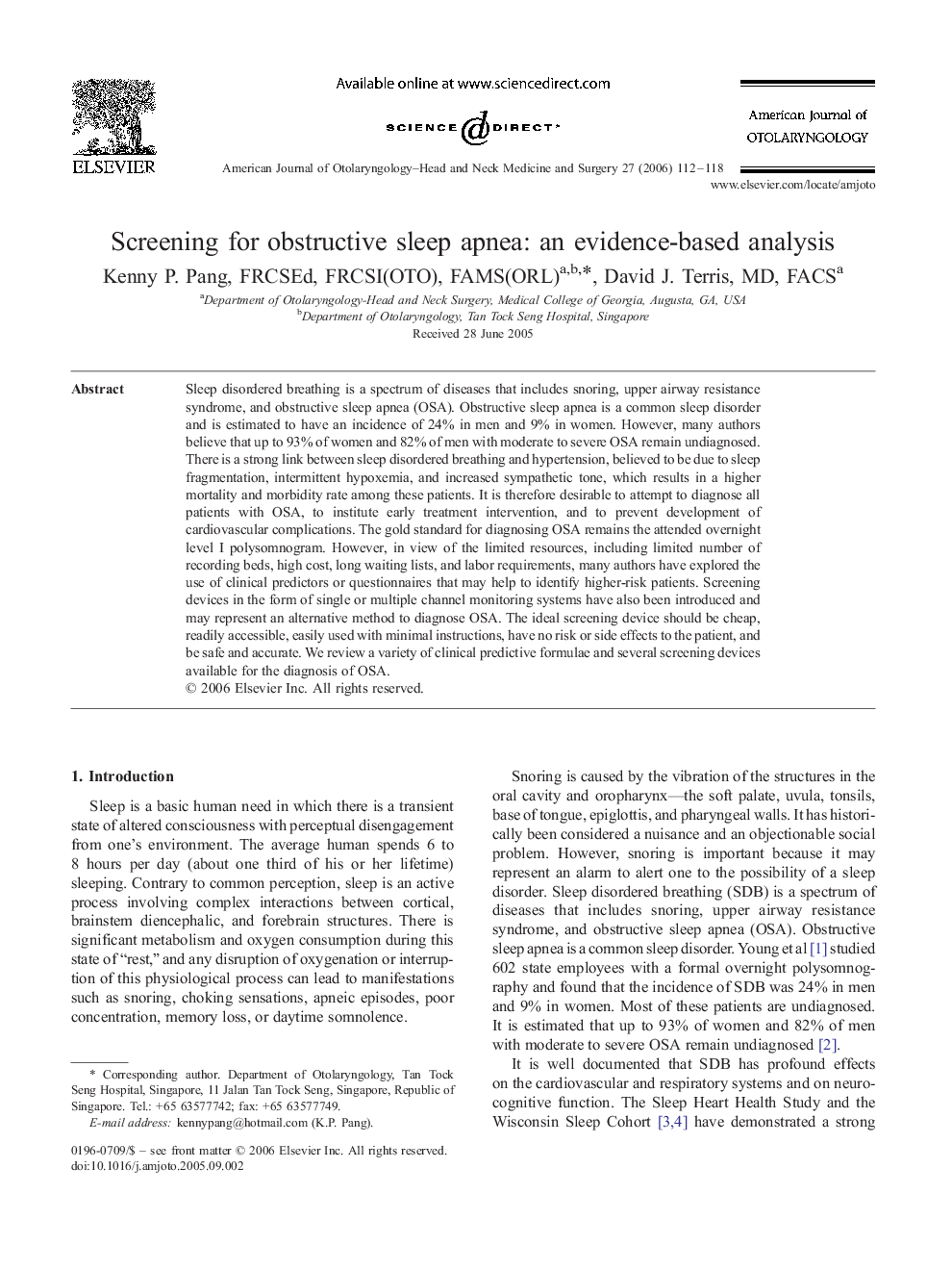| Article ID | Journal | Published Year | Pages | File Type |
|---|---|---|---|---|
| 4104594 | American Journal of Otolaryngology | 2006 | 7 Pages |
Sleep disordered breathing is a spectrum of diseases that includes snoring, upper airway resistance syndrome, and obstructive sleep apnea (OSA). Obstructive sleep apnea is a common sleep disorder and is estimated to have an incidence of 24% in men and 9% in women. However, many authors believe that up to 93% of women and 82% of men with moderate to severe OSA remain undiagnosed. There is a strong link between sleep disordered breathing and hypertension, believed to be due to sleep fragmentation, intermittent hypoxemia, and increased sympathetic tone, which results in a higher mortality and morbidity rate among these patients. It is therefore desirable to attempt to diagnose all patients with OSA, to institute early treatment intervention, and to prevent development of cardiovascular complications. The gold standard for diagnosing OSA remains the attended overnight level I polysomnogram. However, in view of the limited resources, including limited number of recording beds, high cost, long waiting lists, and labor requirements, many authors have explored the use of clinical predictors or questionnaires that may help to identify higher-risk patients. Screening devices in the form of single or multiple channel monitoring systems have also been introduced and may represent an alternative method to diagnose OSA. The ideal screening device should be cheap, readily accessible, easily used with minimal instructions, have no risk or side effects to the patient, and be safe and accurate. We review a variety of clinical predictive formulae and several screening devices available for the diagnosis of OSA.
